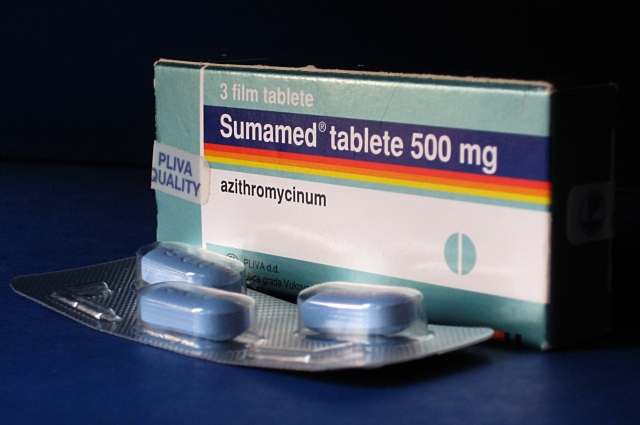|
Aminoglycoside Antibiotics
Aminoglycoside is a medicinal and bacteriologic category of traditional Gram-negative antibacterial medications that inhibit protein synthesis and contain as a portion of the molecule an amino-modified glycoside (sugar). The term can also refer more generally to any organic molecule that contains amino sugar substructures. Aminoglycoside antibiotics display bactericidal activity against Gram-negative aerobes and some anaerobic bacilli where resistance has not yet arisen but generally not against Gram-positive and anaerobic Gram-negative bacteria.ME Levison, MD, 2012, Aminoglycosides, The Merck Manua accessed 22 February 2014. Streptomycin is the first-in-class aminoglycoside antibiotic. It is derived from ''Streptomyces griseus'' and is the earliest modern agent used against tuberculosis. Streptomycin lacks the common 2-deoxystreptamine moiety (image right, below) present in most other members of this class. Other examples of aminoglycosides include the deoxystreptamine-containin ... [...More Info...] [...Related Items...] OR: [Wikipedia] [Google] [Baidu] |
Streptomycin2
Streptomycin is an antibiotic medication used to treat a number of bacterial infections, including tuberculosis, ''Mycobacterium avium'' complex, endocarditis, brucellosis, ''Burkholderia'' infection, plague, tularemia, and rat bite fever. For active tuberculosis it is often given together with isoniazid, rifampicin, and pyrazinamide. It is administered by injection into a vein or muscle. Common side effects include vertigo, vomiting, numbness of the face, fever, and rash. Use during pregnancy may result in permanent deafness in the developing baby. Use appears to be safe while breastfeeding. It is not recommended in people with myasthenia gravis or other neuromuscular disorders. Streptomycin is an aminoglycoside. It works by blocking the ability of 30S ribosomal subunits to make proteins, which results in bacterial death. Albert Schatz first isolated streptomycin in 1943 from ''Streptomyces griseus''. It is on the World Health Organization's List of Essential Medicines. ... [...More Info...] [...Related Items...] OR: [Wikipedia] [Google] [Baidu] |
Tobramycin
Tobramycin is an aminoglycoside antibiotic derived from '' Streptomyces tenebrarius'' that is used to treat various types of bacterial infections, particularly Gram-negative infections. It is especially effective against species of ''Pseudomonas''. It was patented in 1965, and approved for medical use in 1974. It is on the World Health Organization's List of Essential Medicines. Medical uses Like all aminoglycosides, tobramycin does not pass the gastro-intestinal tract, so for systemic use it can only be given intravenously or by injection into a muscle. Eye drops and ointments (tobramycin only, Tobrex, or combined with dexamethasone, sold as Tobradex) and nebulised formulations both have low systemic absorption. The formulation for injection is branded Nebcin. The nebulised formulation (brand name Tobi) is indicated in the treatment of exacerbations of chronic infection with ''Pseudomonas aeruginosa'' in people diagnosed with cystic fibrosis. Tobrex eye drops are a 0.3% t ... [...More Info...] [...Related Items...] OR: [Wikipedia] [Google] [Baidu] |
Amikacin
Amikacin is an antibiotic medication used for a number of bacterial infections. This includes joint infections, intra-abdominal infections, meningitis, pneumonia, sepsis, and urinary tract infections. It is also used for the treatment of multidrug-resistant tuberculosis. It is used by injection into a vein using an IV or into a muscle. Amikacin, like other aminoglycoside antibiotics, can cause hearing loss, balance problems, and kidney problems. Other side effects include paralysis, resulting in the inability to breathe. If used during pregnancy it may cause permanent deafness in the baby. Amikacin works by blocking the function of the bacteria's 30S ribosomal subunit, making it unable to produce proteins. Amikacin was patented in 1971, and came into commercial use in 1976. It is on the World Health Organization's List of Essential Medicines. It is derived from kanamycin. Medical uses Amikacin is most often used for treating severe infections with multidrug-resistant, ... [...More Info...] [...Related Items...] OR: [Wikipedia] [Google] [Baidu] |
Kanamycin
Kanamycin A, often referred to simply as kanamycin, is an antibiotic used to treat severe bacterial infections and tuberculosis. It is not a first line treatment. It is used by mouth, injection into a vein, or injection into a muscle. Kanamycin is recommended for short-term use only, usually from 7 to 10 days. As with most antibiotics, it is ineffective in viral infections. Common side effects include hearing and balance problems. Kidney problems may also occur. Kanamycin is not recommended during pregnancy as it may harm the baby. It is likely safe during breastfeeding. Kanamycin is in the aminoglycoside family of medications. It works by blocking the production of proteins that are required for bacterial survival. Kanamycin was first isolated in 1957 by Hamao Umezawa from the bacterium ''Streptomyces kanamyceticus''. It was removed from the World Health Organization's List of Essential Medicines in 2019. It is no longer marketed in the United States. Medical uses Spectrum ... [...More Info...] [...Related Items...] OR: [Wikipedia] [Google] [Baidu] |
Azithromycin
Azithromycin, sold under the brand names Zithromax (in oral form) and Azasite (as an eye drop), is an antibiotic medication used for the treatment of a number of bacterial infections. This includes middle ear infections, strep throat, pneumonia, traveler's diarrhea, and certain other intestinal infections. Along with other medications, it may also be used for malaria. It can be taken by mouth or intravenously. Common side effects include nausea, vomiting, diarrhea and upset stomach. An allergic reaction, such as anaphylaxis, QT prolongation, or a type of diarrhea caused by ''Clostridium difficile'' is possible. No harm has been found with its use during pregnancy. Its safety during breastfeeding is not confirmed, but it is likely safe. Azithromycin is an azalide, a type of macrolide antibiotic. It works by decreasing the production of protein, thereby stopping bacterial growth. Azithromycin was discovered in 1980 by the Yugoslav pharmaceutical company Pliva and approved f ... [...More Info...] [...Related Items...] OR: [Wikipedia] [Google] [Baidu] |
Clarithromycin
Clarithromycin, sold under the brand name Biaxin among others, is an antibiotic used to treat various bacterial infections. This includes strep throat, pneumonia, skin infections, ''H. pylori'' infection, and Lyme disease, among others. Clarithromycin can be taken by mouth as a pill or liquid. Common side effects include nausea, vomiting, headaches, and diarrhea. Severe allergic reactions are rare. Liver problems have been reported. It may cause harm if taken during pregnancy. It is in the macrolide class and works by slowing down bacterial protein synthesis. Clarithromycin was developed in 1980 and approved for medical use in 1990. It is on the World Health Organization's List of Essential Medicines. Clarithromycin is available as a generic medication. It is made from erythromycin and is chemically known as 6-O-methylerythromycin. Medical uses Clarithromycin is primarily used to treat a number of bacterial infections including pneumonia, ''Helicobacter pylori'', and as an ... [...More Info...] [...Related Items...] OR: [Wikipedia] [Google] [Baidu] |
Saccharopolyspora Erythraea
''Saccharopolyspora erythraea'' is a species of actinomycete bacteria within the genus '' Saccharopolyspora''. ''Saccharopolyspora erythraea'' produces the macrolide antibiotic erythromycin. Cytochrome P450 Cytochromes P450 (CYPs) are a superfamily of enzymes containing heme as a cofactor that functions as monooxygenases. In mammals, these proteins oxidize steroids, fatty acids, and xenobiotics, and are important for the clearance of various co ... eryF (CYP107A1) originally from the bacterium is responsible for the biosynthesis of the antibiotic by C6-hydroxylation of the macrolide 6-deoxyerythronolide B. Small non-coding RNAs have been suggested to be involved in regulation of the secondary metabolite biosynthesis. References External linksType strain of ''Saccharopolyspora erythraea'' at Bac''Dive'' - the Bacterial Diversity Metadatabase Pseudonocardineae {{Pseudonocardineae-stub ... [...More Info...] [...Related Items...] OR: [Wikipedia] [Google] [Baidu] |
Macrolide
The Macrolides are a class of natural products that consist of a large macrocyclic lactone ring to which one or more deoxy sugars, usually cladinose and desosamine, may be attached. The lactone rings are usually 14-, 15-, or 16-membered. Macrolides belong to the polyketide class of natural products. Some macrolides have antibiotic or antifungal activity and are used as pharmaceutical drugs. Rapamycin is also a macrolide and was originally developed as an antifungal, but is now used as an immunosuppressant drug and is being investigated as a potential longevity therapeutic. Macrolides are bacteriostatic in that they suppress or inhibit bacterial growth rather than killing bacteria completely. Definition In general, any macrocyclic lactone having greater than 8-membered rings are candidates for this class. The macrocycle may contain amino nitrogen, amide nitrogen (but should be differentiated from cyclopeptides), an oxazole ring, or a thiazole ring. Benzene rings are exclude ... [...More Info...] [...Related Items...] OR: [Wikipedia] [Google] [Baidu] |
Erythromycin
Erythromycin is an antibiotic used for the treatment of a number of bacterial infections. This includes respiratory tract infections, skin infections, chlamydia infections, pelvic inflammatory disease, and syphilis. It may also be used during pregnancy to prevent Group B streptococcal infection in the newborn, as well as to improve delayed stomach emptying. It can be given intravenously and by mouth. An eye ointment is routinely recommended after delivery to prevent eye infections in the newborn. Common side effects include abdominal cramps, vomiting, and diarrhea. More serious side effects may include ''Clostridium difficile'' colitis, liver problems, prolonged QT, and allergic reactions. It is generally safe in those who are allergic to penicillin. Erythromycin also appears to be safe to use during pregnancy. While generally regarded as safe during breastfeeding, its use by the mother during the first two weeks of life may increase the risk of pyloric stenosis in th ... [...More Info...] [...Related Items...] OR: [Wikipedia] [Google] [Baidu] |
Glycopeptide Antibiotic
Glycopeptide antibiotics are a class of drugs of microbial origin that are composed of glycosylated cyclic or polycyclic nonribosomal peptides. Significant glycopeptide antibiotics include the anti-infective antibiotics vancomycin, teicoplanin, telavancin, ramoplanin and decaplanin, corbomycin, complestatin and the antitumor antibiotic bleomycin. Vancomycin is used if infection with methicillin-resistant Staphylococcus aureus, methicillin-resistant ''Staphylococcus aureus'' (MRSA) is suspected. Mechanism and classification Some members of this class of drugs inhibit the synthesis of cell walls in susceptible microbes by inhibiting peptidoglycan synthesis. The core class (including vancomycin) binds to acyl-D-alanyl-D-alanine in lipid II, preventing the addition of new units to the peptidoglycan. Of this core class, one may distinguish multiple generations: the first generation includes vancomycin and teicoplanin, while the semisynthetic second generation includes lipoglycopept ... [...More Info...] [...Related Items...] OR: [Wikipedia] [Google] [Baidu] |
Vancomycin
Vancomycin is a glycopeptide antibiotic medication used to treat a number of bacterial infections. It is recommended intravenously as a treatment for complicated skin infections, bloodstream infections, endocarditis, bone and joint infections, and meningitis caused by methicillin-resistant ''Staphylococcus aureus''. Blood levels may be measured to determine the correct dose. Vancomycin is also taken by mouth as a treatment for severe ''Clostridium difficile'' colitis. When taken by mouth it is poorly absorbed. Common side effects include pain in the area of injection and allergic reactions. Occasionally, hearing loss, low blood pressure, or bone marrow suppression occur. Safety in pregnancy is not clear, but no evidence of harm has been found, and it is likely safe for use when breastfeeding. It is a type of glycopeptide antibiotic and works by blocking the construction of a cell wall. Vancomycin was approved for medical use in the United States in 1958. It is on the World ... [...More Info...] [...Related Items...] OR: [Wikipedia] [Google] [Baidu] |




